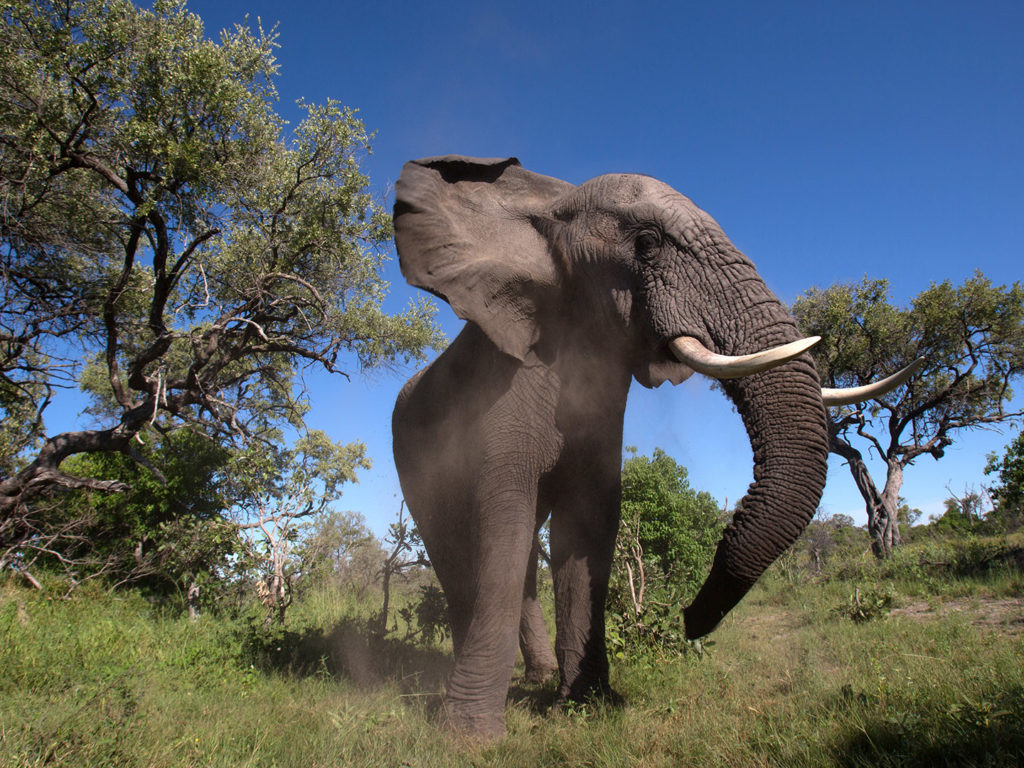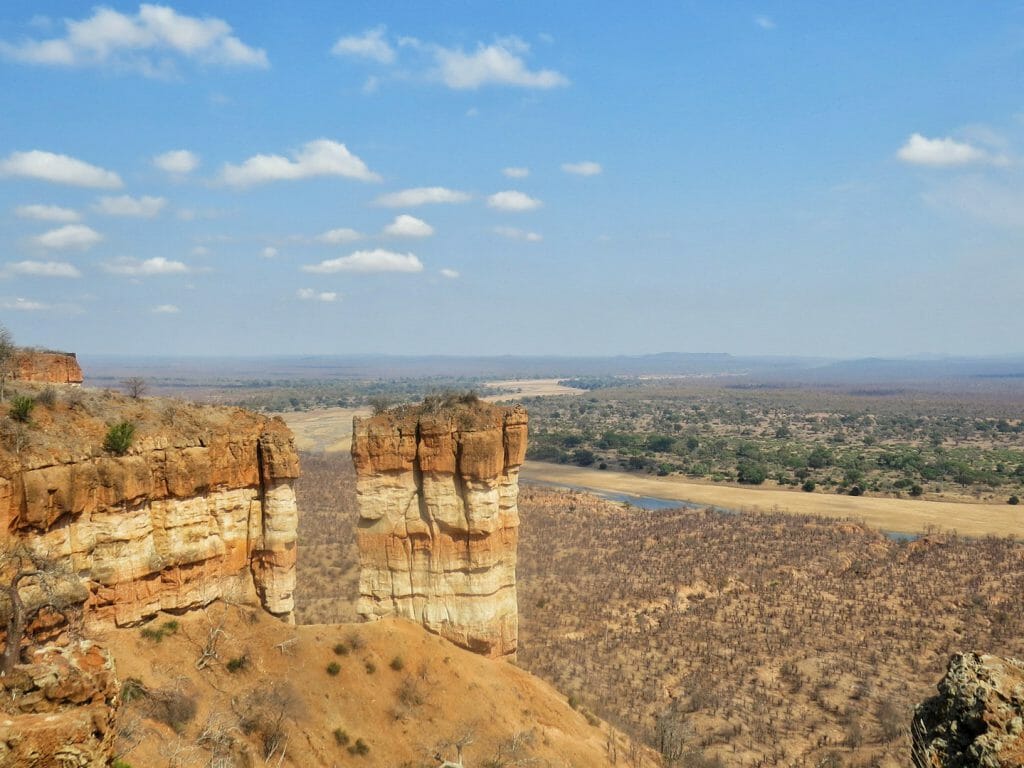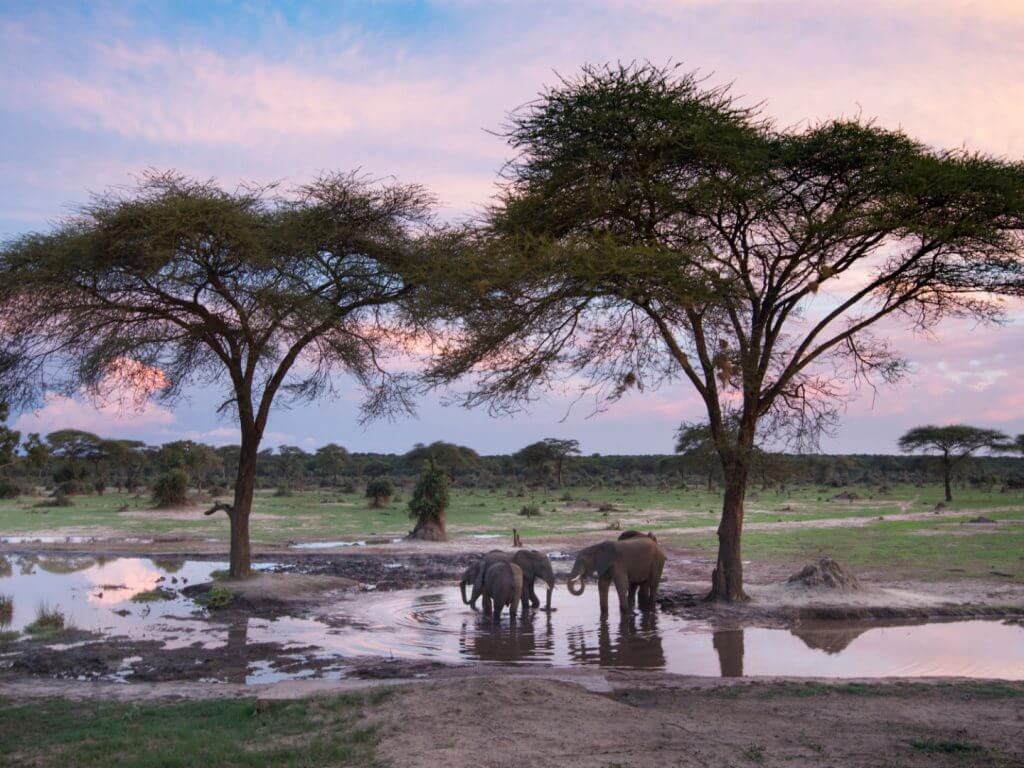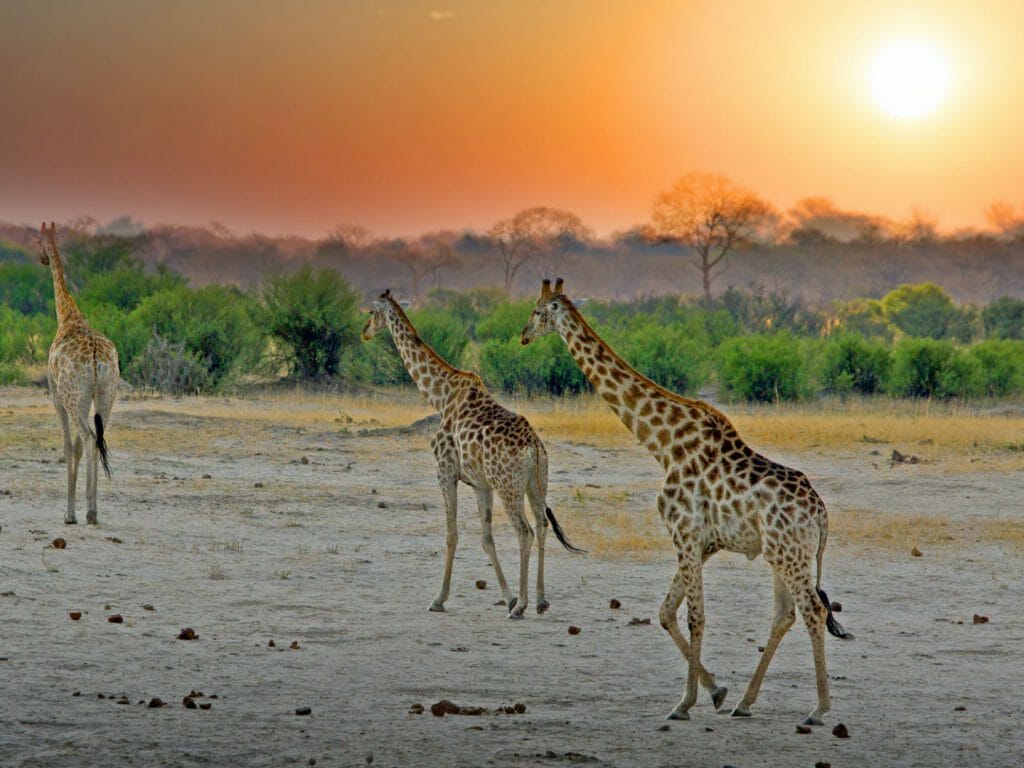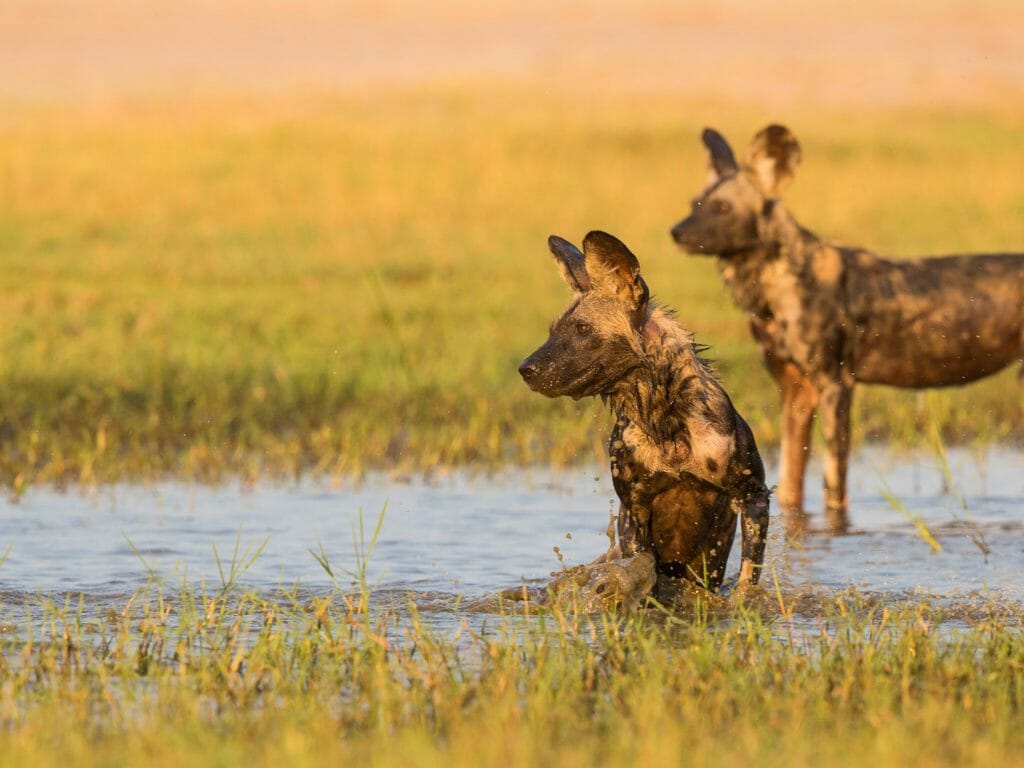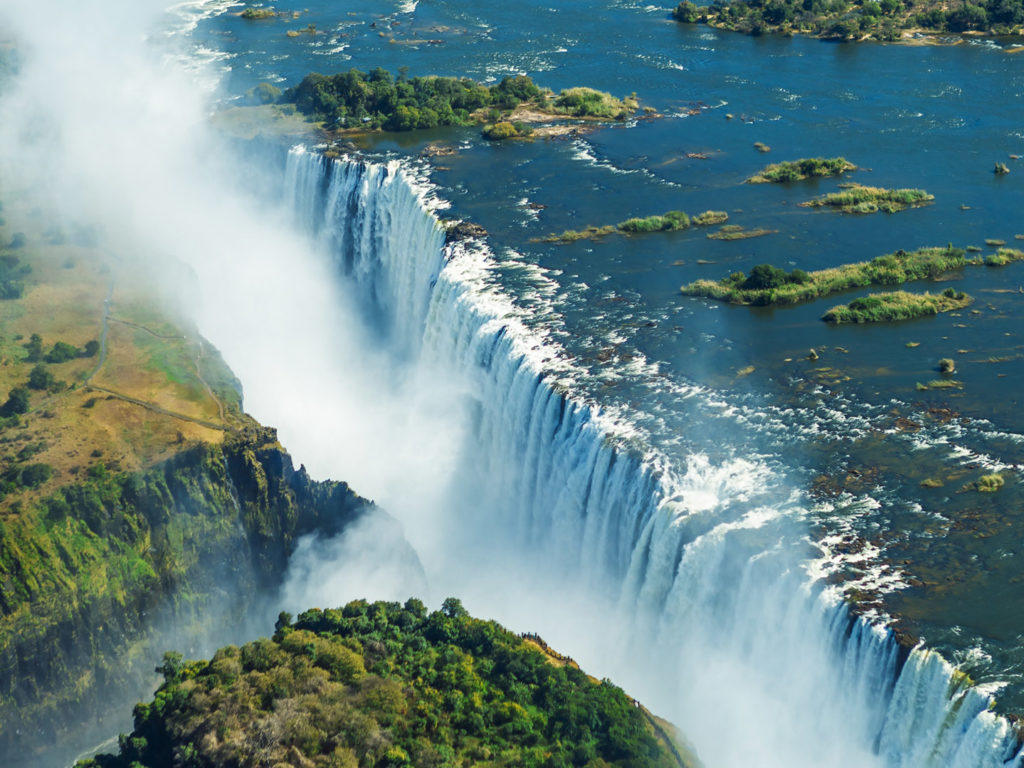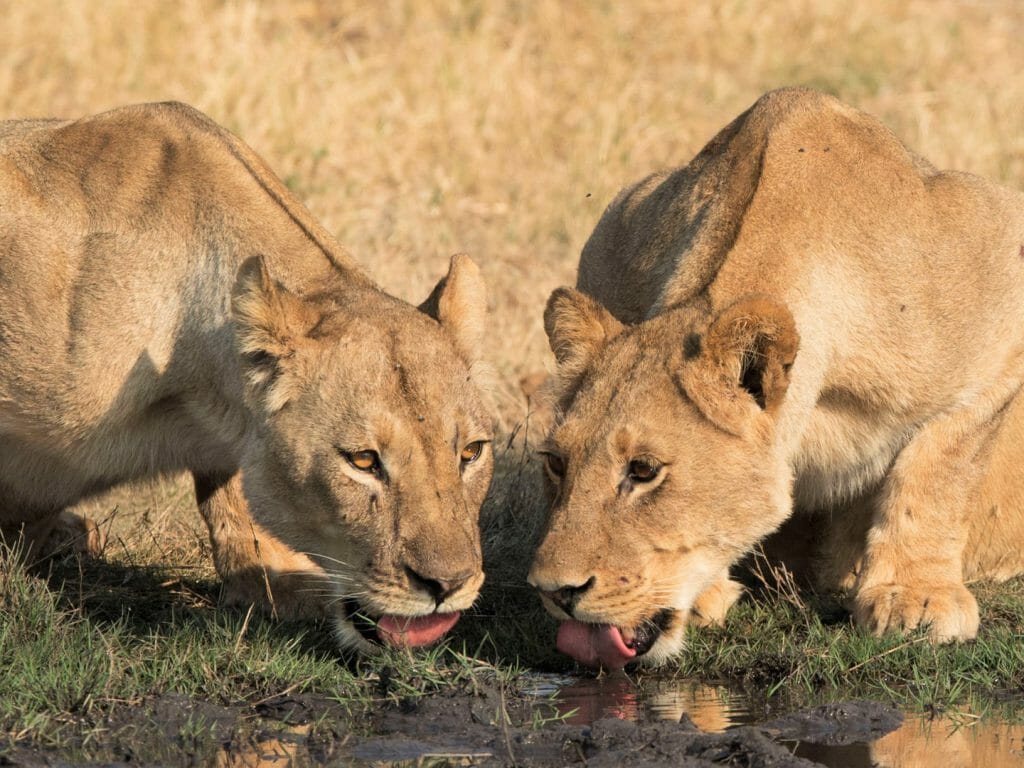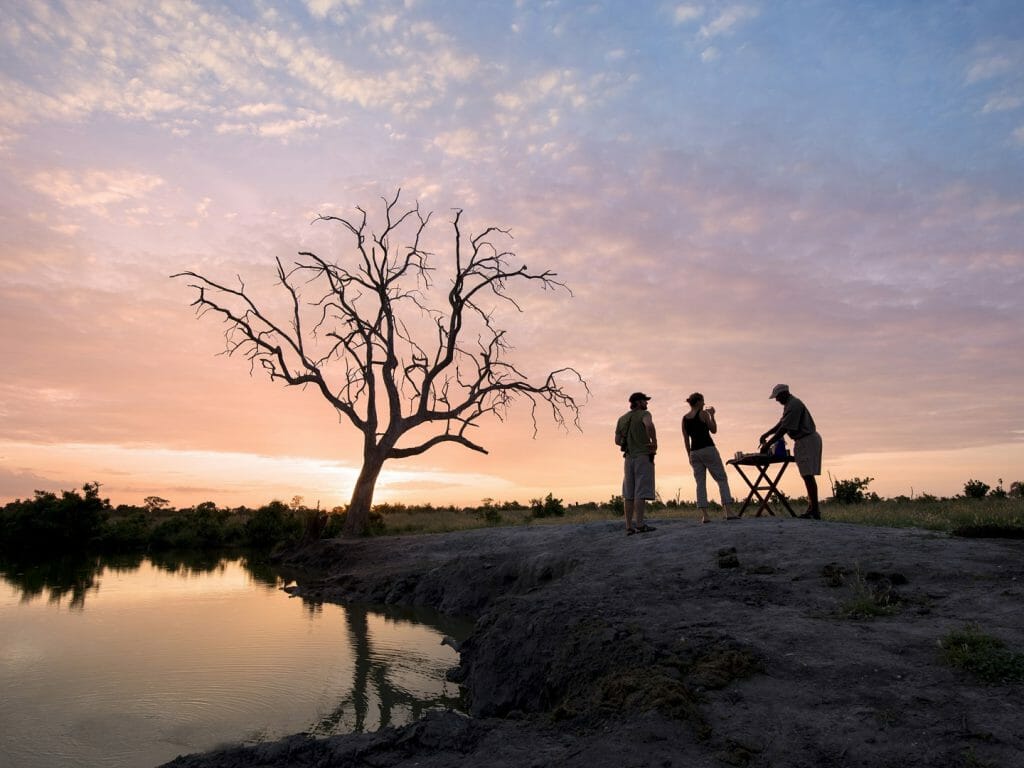Calvet Nkomo, our guide in Hwange, Zimbabwe, looks back at us, his brows furrowed as the dwindling remnants of sunlight drift across the plains of Imbiza, imbuing this almost prehistoric landscape with hues of pink and purple. “I can teach and train for years but some things…’’ Calvet pauses again, glancing over at the silhouette of a herd of elephants in the distance. ”Well, some things you just know and feel. They can’t be taught. You can’t Google the bush.’’
This is my first safari, the first opportunity I’ve had to really learn what an experienced guide has to offer, and I’m in total agreement. Four days into our trip and every evening I’m left thinking ‘’How can this possibly get any better?’’ Yet in the mornings I awake with a renewed sense of wonder, and every trip out into the bush somehow seems to top the last.
The next day, after a lazy morning in the gathering heat, a feverishly animated Calvet bounds into camp with a big announcement. “Lions!” We have a choice: afternoon tea, or head out to see the pride during the golden hour. It’s not a difficult decision. Without hesitation, the entire party leaps into the Land Cruiser, armed with our cameras. We had caught a glimpse of Bubesi, the new leader of Cecil’s pride, the day before and now there is a rumour he is nearby. Bubesi has taken over much of the territory once dominated by Cecil, Hwange’s most famous lion until his untimely death at the hands of a trophy hunter in 2015.
Guides are an integral part of any safari experience. Often building up a store of knowledge over decades, there are few things they don’t know about the bush. As we pass another group watching a dazzle of zebras quench their thirst around a waterhole, I can’t help feeling a little smug. I know we’re in the right vehicle, with the best guide. Calvet, otherwise known as Hwange’s answer to Lewis Hamilton, is a dynamo behind the wheel. He realises time is of the essence and expects us not to mind the occasional bump. We swing down a narrow track lined with tall bushes and trees, ducking low-hanging branches. I hold on tightly, already accustomed to his unique style of driving.
Suddenly Calvet brings the jeep to a halt. “I smell them!” We look around carefully, but apart from a few overgrown bushes, nothing. Then, besides a termite mound, movement. ‘’Yebbo yes!’’ Calvet whispers excitedly. Half-standing with his arms raised at ninety degrees, he performs a little shimmy – what we fondly describe as the ‘Calvet Dance’. Just twenty metres away from us, a heap of lions sprawl untidily across each other, their fur swaying in the breeze and catching beams of golden light.
We’re now miles away from the nearest track, so I ask the obvious question: “How did you know they were here, Calvet?’’
“I just knew” he replies, with a smile in his eyes. No GPS. No tip-off. Pure instinct has brought us this amazing sight.
He brings the jeep around so we can get the perfect photo angle, then introduces us to each of Bubesi’s five lionesses and their cubs in turn. Several of them lethargically get to their feet and approach us, heads tilted upward, more inquisitive than menacing. Calvet assures us they have probably eaten already, so there’s no need to be alarmed. Nevertheless, he is completely alert. Slowly, the lionesses walk past the front of the jeep before laying back down on a grassier, shaded area to our right. The largest of them remains standing, stretching her jaw to give a pained, rumbling roar that carries across the plains. The emotion is obvious.
Calvet whispers “She is crying out for her son, Xanda. They don’t know where he is or what has happened to him.” She roars a second time, before slowly descending from the mound. We turn to each other, horrified that we are seeing first-hand the cruel effects of hunting. Earlier this year Professor David McDonald, the director of WildCru, authored a government report on lion conservation and trophy hunting. Between 2003 and 2014 lion populations have declined by at least 42%. The stark figure keeps repeating itself in my head as we watch the pride.
After a few moments more of awe-struck silence, Calvet bounces up and down in his seat, grins and starts the ignition. Now on he adopts a relaxed cruising speed (for him anyway), veering onto a more established path towards Imbiza, before quickly tapping the brakes again. We gasp in unison as a herd of elephants appears as if from nowhere, striding directly across our path. As they approach, they part into two groups, passing along either side of the jeep. We gaze in amazement, and I can’t help but be reminded of the scene from Jurassic Park when the children watch from their vehicle as hundreds of dinosaurs casually stomp by. The elephants ignore us, but that does nothing for our feelings of vulnerability and humility.
The night is falling, and Calvet, one hand on the steering wheel, uses the other to shine a torch into the darkness. We jolted forward as he brakes sharply again. “Bubesi. He’s close. This way. I can feel it.” Thinking there is no way we’ll be able to find Bubesi when it’s this dark, I am quickly proved wrong by Calvet’s attuned instincts. Moments later the magnificent Bubesi stands between the headlights. We follow him slowly for five minutes, but not once does he turn back to look at us. He doesn’t need to make any allowances. This is his territory and he knows it.
Back at Somalisa Acacia camp, we stand near the waterhole, watching as reluctant elephant calves are ushered in by their mothers’ persistent trunks. They squeeze through between their larger, older siblings and frolic happily in the water, joyously blowing raspberries. The older elephants watch over them, slurping from the pool and glancing around regularly. They are quite aware that we are here, but they don’t need to make a show of strength to assert themselves. Each time they deeply breathe out, their warm, earthy scent fills the air. We sit completely still, mesmerised as the darkness intensifies our hearing.
“Look over there,” whispers Calvet. In the shadows to our right, two leopards approach the waterhole, their stealthy, sleek forms brilliantly etched in the moonlight. Nocturnal animals, leopards are usually elusive. They’re also mostly solitary, so this is an incredibly rare experience. They stare straight across at our group for a moment, before slipping cautiously away back into the darkness.
Unexpected moments like this are the ones we treasure most. There is no commentary, no camera-clicking or lens zooming. Just silence. The majesty of the wildlife is deafening.
‘’Did you see the giraffes?’’ asks one of our party casually over coffee the next morning.
‘’When?!’’ I demand enthusiastically, jumping to my feet and gazing out towards the
waterhole. ‘’Just now? I can’t see them…’’
“About 10 minutes ago,” she replies. “They passed right by my tent.’’
It seems crude to think of safari as a checklist, but we’ve been treated to such a wealth of wildlife sightings over the last few days and I’ve been a little disappointed not to have seen a giraffe yet. Perhaps I’m being greedy? But, Calvet, as excitable and generous as ever, springs into action. ‘’We’ll find them before you leave. Let’s take a walk into the bush’’
Single file we trek, eyes wide and eager. We see an elephant slowly making his way down to the waterhole for a drink. As we progress deeper into the trees, Calvet occasionally raises his hand in the air, signalling us to gather around. First to show us a patch of small insects, then to feel a velvety acacia pod – a favourite treat for elephants – then to point out some perfectly rounded giraffe scat. Still a little moist and warm, it gives us hope we are close. It isn’t even 7 am, but the sun is beating down. Calvet calls another halt: ‘’I’ll call us a bush taxi’’. The group looks relieved to be escaping the heat but disappointed the giraffe hunt is probably over. Calvet, however, grins at us as he radios back to camp. My spirits lift. He knows exactly where they are. Within minutes a Land Cruiser arrives. We pile in and assume our positions, and before long Calvet shouts from the front seat.
‘’Yebbo Yes! I see them, can you?’’ He’s no longer a young man, but Calvet’s eyesight is astonishing. He can make out tiny details from incredible distances. It is several minutes before anyone else catches sight of the giraffe. They emerge elegantly from the bush, the male considerably darker and taller than the four females accompanying him. A gangly juvenile follows. While our group is hushed by the serene spectacle, Calvet decides to test our wildlife knowledge.
‘’Do you know why their necks are so long?’’
A moment of thought. ‘’To reach for food?’’ the woman to my left suggests.
“No. It’s because their heads are so far away”.
Calvet’s guiding abilities are impeccable. His jokes are not.
Turning back to the giraffe, his eyes twinkle, and his mouth curves into a wide smile as though this is the first time he’s ever seen one. The almost-childlike enthusiasm is infectious. As adults, we often learn to guard our emotions, but the bush strips all such pretence. Calvet clearly lives for moments like these, and it’s a privilege to discover the bush through his eyes.
Seeing wildlife when on safari is never guaranteed but when you’re with a guide that knows the land and its inhabitants so well, the odds are always in your favour.


